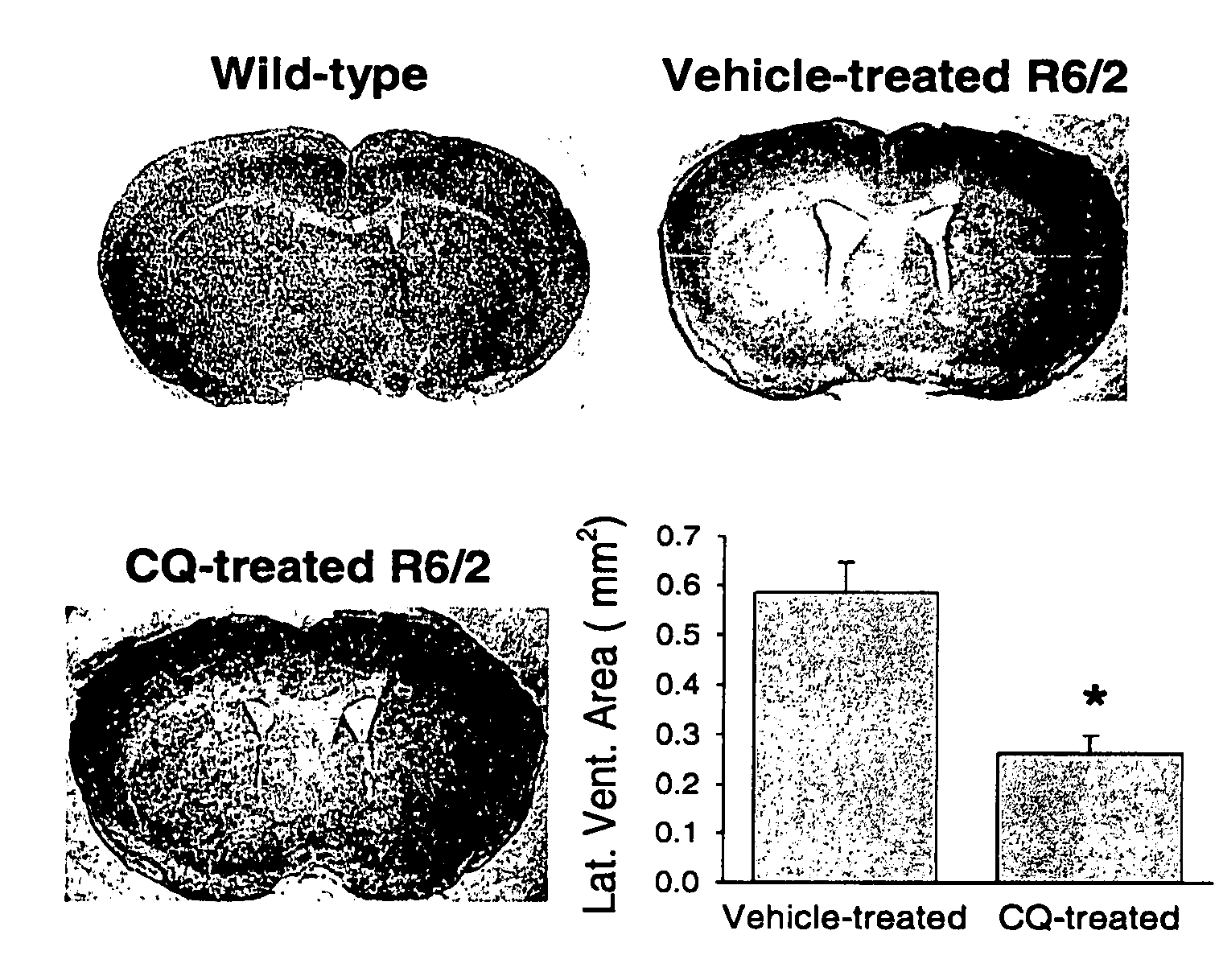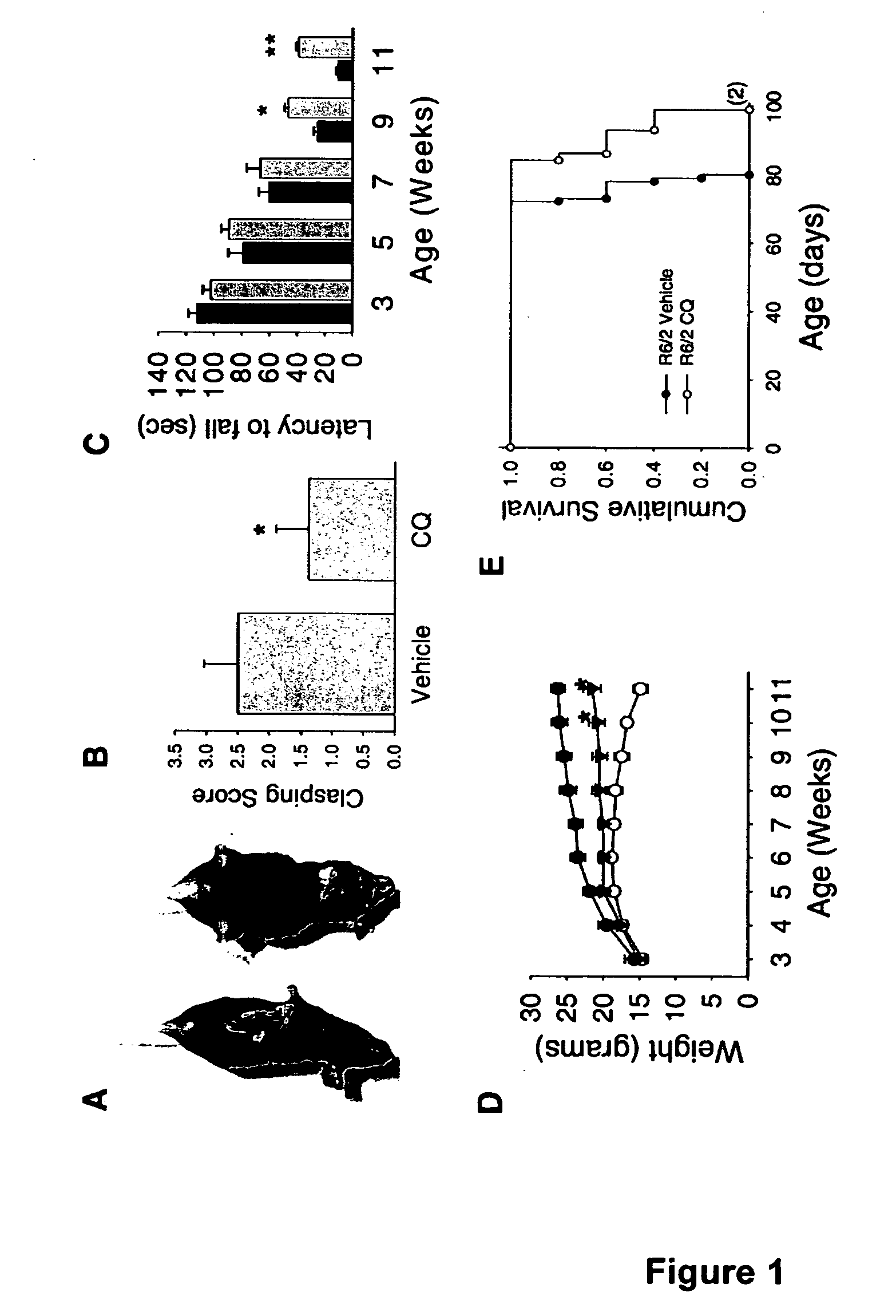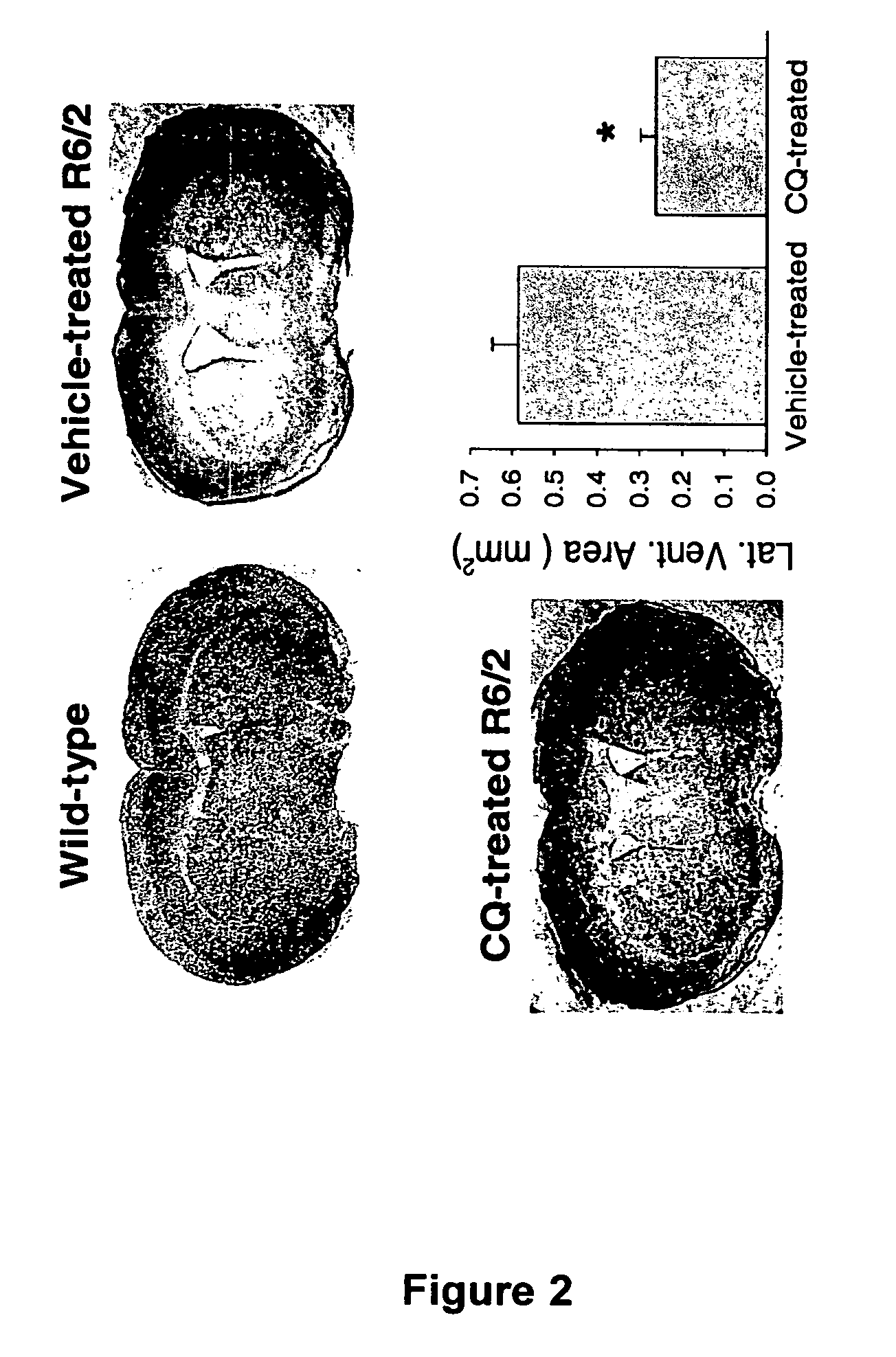8-hydroxyquinoline compounds for treating a polyglutamine (polyQ)-expansion disease
- Summary
- Abstract
- Description
- Claims
- Application Information
AI Technical Summary
Benefits of technology
Problems solved by technology
Method used
Image
Examples
example 1
R6 / 2 Transgenic and Wild-Type Littermate Mice
[0102] A colony of transgenic mice strain R6 / 2 that is heterozygous for htt exon1 (containing 145 CAG repeats) was maintained, with founders originating and available from The Jackson Laboratory (Bar Harbor, Me., USA). Male transgenic R6 / 2 mice were bred with background strain (B6CBAFI / J) females. Genotyping was done according to Hockly et al, Brain Res Bull 61, 469-479, 2003. CQ in water was orally administered to mice at 30 mg / kg / day starting at 3 weeks of age and continued until the mice were deceased or sacrificed for tissues. Littermate R6 / 2 mice were gavaged with water vehicle alone. At the end of CQ treatment mice were anesthetized and transcardially perfused with PBS followed by 4% v / v paraformaldehyde. Blood glucose levels were determined after at least 8 hrs of fasting in 11-week old mice (n=6 for wild-type, n=4 for vehicle-treated R6 / 2, n=6 for CQ-treated R6 / 2 littermates) using a 2300 STAT Plus glucose analyzer (YSI, Yellows...
example 2
Cell Culture, Transfection and CQ Treatment
[0103] PolyQ-htt-GFP fusion constructs, in which the polyglutamine region is encoded by CAA and CAG-containing tandem repeats (CAACAGCAACAACAGCAG) [SEQ ID NO: 1], human polyglutaminen, were obtained from the Hereditary Disease Foundation, Santa Monica, Calif., USA. PC12 and HEK293 cells were maintained in MEM supplemented with 10% v / v FBS, switched to Opti-MEM without serum for 6 hrs during transfection using Lipofectamine 2000 (Invitrogen, Carlsbad, Calif., USA), and returned to serum-containing medium thereafter (up to 48 hours). Cells were exposed to CQ (Sigma, St. Louis, Mo., USA) at 0.5 μM to 8 μM beginning 30 min prior to transfection. Control cultures received equivalent amounts of DMSO-containing vehicle (<0.1% w / v DMSO, final concentration).
example 3
Western Blotting
[0104] HEK293 or PC12 cells were lysed in PBS buffer containing 1% v / v Triton X-100 and protease inhibitor cocktail (Roche, Indianapolis, Ind.), and passed through a 28 gauge needle to ensure the release of Htt inclusions from the nuclei. Whole mouse brains were homogenized in 50 mM Tris-HCl (pH 7.4), 150 mM NaCl, 1% v / v Triton X-100 and complete protease inhibitor cocktail. Brain homogenate was pre-cleared by centrifuging at 7,500 g for 90 s at 4° C. The supernatant was passed through a 28-gauge needle and boiled in SDS sample buffer for 10 min. Fifty μg of total protein was loaded onto 10% w / v SDS gel containing a 4% w / v stacking gel. Monoclonal antibodies anti-polyglutamine (1:2,000), anti-GAPDH (1:10,000), anti-GFP (1:4,000), and anti-Htt (EM48) in 1:1000 dilution were used for immunoblotting. All western blot experiments were performed at least three times and band intensities were averaged.
PUM
| Property | Measurement | Unit |
|---|---|---|
| Mass flow rate | aaaaa | aaaaa |
| Fraction | aaaaa | aaaaa |
Abstract
Description
Claims
Application Information
 Login to View More
Login to View More - R&D
- Intellectual Property
- Life Sciences
- Materials
- Tech Scout
- Unparalleled Data Quality
- Higher Quality Content
- 60% Fewer Hallucinations
Browse by: Latest US Patents, China's latest patents, Technical Efficacy Thesaurus, Application Domain, Technology Topic, Popular Technical Reports.
© 2025 PatSnap. All rights reserved.Legal|Privacy policy|Modern Slavery Act Transparency Statement|Sitemap|About US| Contact US: help@patsnap.com



